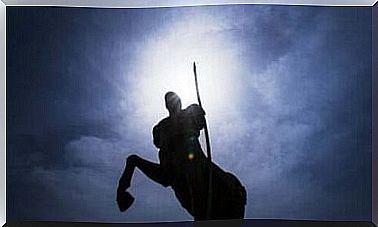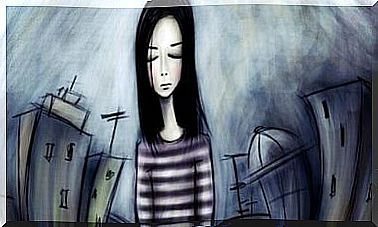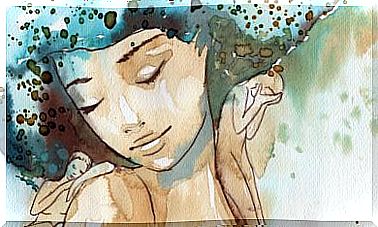Quentin Tarantino And His Preference For Violence
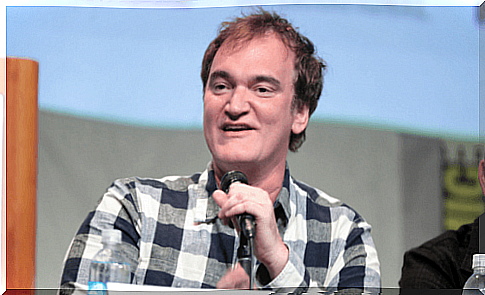
Quentin Tarantino is a director whose name has become a household name through his hard work. When we look at one of his films, we know that it will be full to include violence, music, fetish, close-ups of female feet and enormous tributes to other artists.
Tarantino loves to pay tribute to filmmakers like Alfred Hitchcock, kung-fu movies, spaghetti westerns and even the Flintstones .
Tarantino does what he wants. He makes guest appearances, plays with color and recycles older plans. He reinvents scenes and mixes everything until he gets what he was looking for. Many people accuse him of plagiarism, but he does not go beyond admitting that he was inspired by other films.
Everyone benefits from other people’s tastes and allows themselves to be influenced by this to their own advantage. That’s why when you make something completely new in the 21st century, you’re quickly accused of “copying” someone else’s work. This, or it is said that you have only slightly modified other people’s work.
Quentin Tarantino has said more than once that a person does not have to have an education to make good films. You just need to have a passion for the profession. His passion is therefore visible in his films. That said, one question remains: why do we love violence so much? What makes Quentin Tarantino’s movies so special?
The peculiarities of Quentin Tarantino’s films
Quentin Tarantino took acting classes and worked in a movie store. He has let it be known that this workplace gave him a lot of inspiration. The idea of Reservoir Dogs surfaced one day when he got together with a bunch of friends.
Around that time, Tarantino saw no opportunity to make a real movie, so he settled for a cheap production with his friends. However, the producer Lawrende Bender read his script and gave him a chance to break through.
He pays tribute to all kinds of films. Here are some examples:
- The world famous film Pulp Fiction (1994) featured a dance scene inspired by Fellini’s 8½.
- Uma Thurmans’ outfit in Kill Bill (2003) , on the other hand, strongly reminds us of Bruce Lee.
Tarantino’s films are all about immersing the viewer in a world of intertextuality. This term stands for echoes of literary texts in one’s literary work — or in this case, in one’s cinema. Anyway, Tarantino’s films have their own storyline and identity while at the same time being full of suggestions and references.
Success as a screenwriter
After Pulp Fiction (1994), people finally saw Tarantino as a true director and screenwriter. He gained the attention of the public and critics, which quickly led to his first Academy Award for Best Original Screenplay (Oscar for Best Original Screenplay).
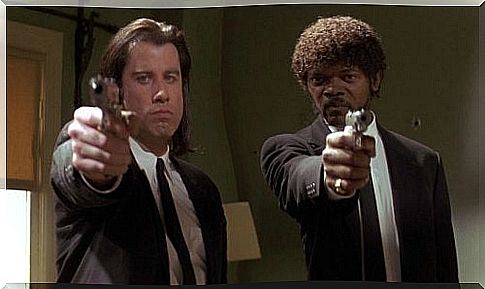
Other films such as Jackie Brown (1997), Inglorious Bastards (2009) and Kill Bill (2003) also contributed to the creation of Quentin Tarantino’s good reputation. His latest films such as Django Unchained (2012) and The hateful Eight (2015) were a declaration of love for the often forgotten spaghetti western genre.
With these films, Tarantino rediscovered the essence of this genre and filmmakers such as Sergio Leone and Ennio Morricone. The latter has also created quite a few of the most famous film compositions.
Another interesting fact about Tarantino’s films is that he is also personally responsible for the music compositions used in them.
He, on the other hand, isn’t at all concerned about anachromisms —that is, things that don’t fit the present day. He somehow manages to twist the puzzle pieces in such a way that they all fit together perfectly in the final product.
Quentin Tarantino and his preference for violence
If there’s one thing that really characterizes Quentin Tarantino’s films, it’s violence. This also involves explicit violence; about massacres that are sometimes so absurd that you have to laugh about it. A typical quirk of his films is that they rarely feature characters that you will quickly feel sympathy for.
As a result, viewers care little about who dies first or last. The Hateful Eight (2015) is a good example of this. If you’re planning to watch a Quentin Tarantino movie, don’t expect to encounter endearing characters. Be ready to see a lot of blood and violence – and to laugh about it too.
Ironically, people have come to love his films immensely despite the disorganized storytelling and explicit violence. The scenes he creates in his productions are beautiful art forms.
For example, the famous scene of someone’s ear being cut off in Reservoir Dogs (1992) was unique because of the background music and dancing in the background. At the same time, it was a kind of “replica” of a scene from Corbucci ‘s film Django (1966).
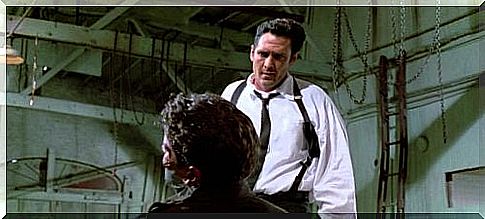
Can violence really be a good thing? Is there a limit to this? Tarantino has repeatedly said that his films are pure fiction, meant to be enjoyed. Instead of wondering whether the violence in this is morally just or not, we should just enjoy it.
The music somehow turns the violence in Tarantino’s films into something beautiful and aesthetically pleasing. There is a clear difference between films that portray violence in a realistic, raw way and films that present violence as just a reason for entertainment.
And what about morality?
In addition, Quentin Tarantino has also talked about the fact that kung fu movies are also particularly violent. However, no one doubts the moral intent of these films: they are intended to be pure entertainment.
When it comes to raw, violent films like The Passion of the Christ with Mel Gibson (2004), Das Experiment with Oliver Hirschbiegel (2001), or Irrëversible with Gaspar Noé (2002), audiences feel no pleasure at all. People often feel uncomfortable when they watch these kinds of movies.
However, this doesn’t happen (or rarely) when you’re watching a Quentin Tarantino movie or someone like Martin Scorsese, for example. These filmmakers use violence as a method of achieving catharsis. They want to convey freedom and purification through visual material.
Even the Ancient Greek Aristotle referred to his work a number of times in his work Poetica . Here he analyzed the Greek tragedies and what they were about. Why did the Greeks enjoy violent or even incestuous scenes so much? That was precisely because these subjects were subject to an enormous taboo.
Nevertheless, they were characteristic passions of people at the time that were often suppressed out of a sense of morality. Therefore, these violent performances acted as a catharsis for the Greek spectators. That’s what made the tragedies so much fun to watch.
The final verdict
Several psychoanalytic authors such as Freud delved deeper into this subject. He and other experts concluded that the taste for violence appears to be a human trait that we have somehow sought to transform into an art form.
Quentin Tarantino always reminds us that his movies are nothing more than fantasy. The unrealistic aspects of this are exactly what his fans enjoy most. They act like catharsis and are full of passion and emotion. Without a doubt, Tarantino’s films are meant to be enjoyed.


